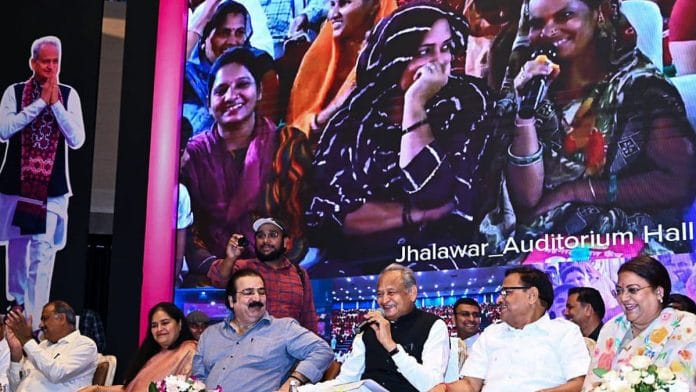Low income levels at the bottom of the pyramid, a frustrating lack of accurate consumption data, and limited avenues for income growth have meant India is stuck fighting poverty through subsidies and ‘freebies’ rather than with more effective and long-lasting measures.
Rather than making people less poor by increasing income levels, the attempt is, and increasingly will be, to instead help them spend less. This is not a great situation to be in.
Subsidies are politically difficult to withdraw, and impose an increasing burden on government finances each subsequent year. Improvements made through government schemes that don’t entail continued subsidies also run the risk of being undone once those subsidies run out—as has happened with the toilets built and gas connections provided.
In any case, by trying to reduce expenditure on essentials, the government is at most helping the poor stay afloat rather than really pulling them out of poverty.
Poverty reduction is tied to freebie
The problem, as Niti Aayog’s update to its Multidimensional Poverty Index (MPI) shows, is that much of the progress made in poverty reduction has occurred in areas that benefit heavily from subsidies and schemes at the central and state levels. These include access to cooking fuel, sanitation, drinking water, electricity, housing, and bank accounts.
Indicators like education and health—both of which have a more significant impact on long-term poverty reduction—have seen distressingly low levels of improvement.
The sharpest improvement—a reduction of 21.8 percentage points between 2015-16 and 2019-20—was seen in the sanitation category, which measures the percentage of households deprived of exclusive access to a modern toilet. It would not be a stretch to attribute a large part of this improvement to the Swachh Bharat Abhiyan launched by the Centre in 2014 to eliminate open defecation. Several states have also taken this up as a priority.
The second-largest improvement was in the cooking fuel category, from 58.5 per cent of the population being deprived in 2015-16 to 43.9 per cent being deprived as of 2019-20. Here, too, a large part of the improvement can be attributed to the Pradhan Mantri Ujjwala Yojana (PMUY), which was launched in May 2016 to provide poor households with a gas connection.
Now, the thing is, simply providing people with these amenities does not improve their quality of life for too long, if it is not backed with either education or continued financial support. So, multiple reports emerged from across the country that the Swachh Bharat toilets were lying unused, and in some cases were even converted into shops. Of course, the toilets have on average improved living conditions, but their impact has been diluted.
Rising gas prices have also meant that many gas connections provided under PMUY weren’t renewed once the first free cylinder ran out. In a bid to encourage people to continue using gas instead of wood fires or coal, the government has had to continue a pretty expensive subsidy programme.
It’s a simple point. Why aren’t the middle class or the rich complaining about the price of gas? Because the gas bill consumes a tiny part of their overall income. If the government wants the poor to continue spending on gas without also having to subsidise them, there’s no other way than to increase their incomes. That’s way easier said than done, and that’s why the subsidy burden will continue—it needs to.
The other multidimensional poverty indicators where India has seen substantial, albeit more minor, improvements are access to electricity (where the Centre has spent on providing the infrastructure but several states have subsidised the actual electricity), bank accounts (thanks to the PM Jan Dhan Yojana), housing (PM Awas Yojana and other state-level schemes), and water (which is also heavily subsidised in many states).
Also read: Govt has been counting India’s poor all wrong—it’s ad hoc, arbitrary
Why subsidies are here to stay
An important point to be made is that poverty alleviation is more than just providing basic essentials and leaving things at that. Yes, a roof over one’s head, access to electricity, drinking water, and cooking gas are all absolutely essential for everybody. But aspirations don’t end there.
People want more, as they should, and that’s just not going to happen without enhancing their incomes. They will continue to view themselves as poor and, without official data, that’s perhaps the most accurate measure we have.
One of the most important and accurate measures of poverty is the government’s Household Consumption Expenditure Survey, which measures household incomes as well as expenditure. The latest data available is more than a decade old—for 2011-12. The government had in 2019 scrapped the results of the survey conducted for 2017-18.
Even the much-cited (and refuted) IMF paper by Surjit Bhalla, Karan Bhasin, and Arvind Virmani had to include the free food transfers by the government during the Covid-19 pandemic to postulate that poverty and inequality had not been affected by the pandemic-induced lockdowns.
This paucity of official data has meant analysts have had to look at other metrics to see how those at the bottom rungs of the economic ladder are doing. There’s no need to really look hard to see how the upper levels are doing. It’s called conspicuous consumption for a reason.
But poverty is measured by absences—the absence of sales of two-wheelers or small cars, for example. If a household feels it cannot afford to buy a two-wheeler right now, it’s highly likely it considers itself poor. And if it considers itself poor, it’s not happy with the current state of things. This does not bode well for incumbent politicians.
The overwhelming feeling is that the bottom half of India is not doing well at all. They’re just about getting by, and there’s very little scope for any improvement any time soon. This means subsidies are here to stay. Worryingly, it also means subsidy expenditure will likely increase as politicians try to meet a wider set of aspirations through more diverse freebies.
(Edited by Prashant)






